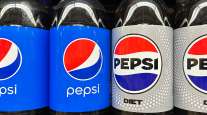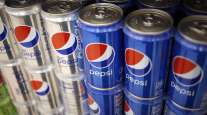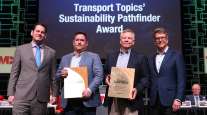PepsiCo Expands EV Fleet to Boost Cost Savings
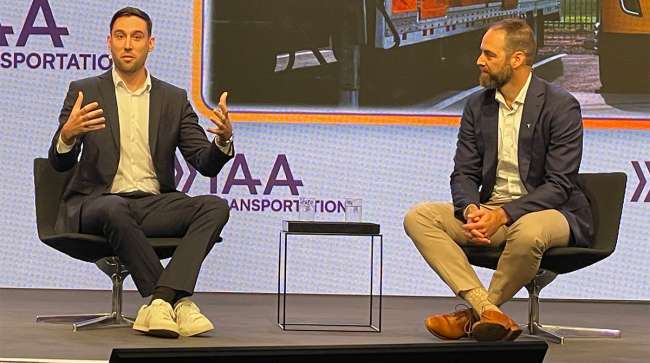
[Stay on top of transportation news: Get TTNews in your inbox.]
HANOVER, Germany — Electrification within the PepsiCo fleet is creating cost savings, and the company has plans to scale electric trucks across North America. PepsiCo began pursuing electrification around 2018, starting with one site.
“We have seen and are seeing electrification and electricity provide a lower-cost solution over time,” said Dejan Antunovic, electrification program manager at PepsiCo. “For us, cost is a big factor.”
PepsiCo has three California depots with EVs — Modesto, Sacramento and Fresno — and operates three types of fleets. One hauls Pepsi beverages in delivery applications.
“These are trucks that operate much more localized to a city — an urban area — they’re going perhaps 150 kilometers [about 93 miles] or less per day,” Antunovic said. “That has been a great use case.”
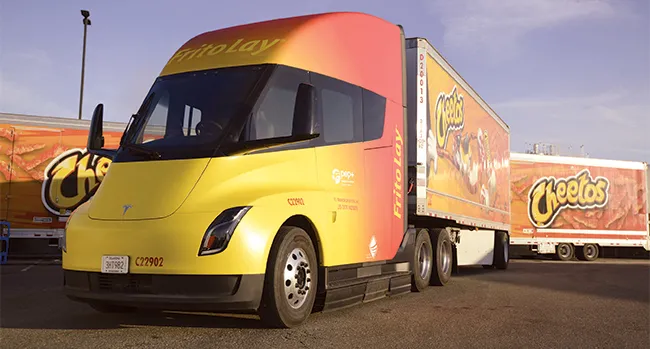
PepsiCo's battery-electric Tesla Semi. (PepsiCo Inc.)
A transport fleet handles regional and longhaul beverage loads.
“These drivers operate in a slip-seat fashion,” he said. “They may run 800 kilometers [about 487 miles] or so within that shift, and, at that point, return to depot. There’s maybe a 30- to 45-minute pause, and that same truck is then taken by another driver on another route.”
The Frito-Lay side of the business is hauling chips in regional and longhaul applications.
“What we’ve been able to do in really all three of those settings, but mainly the regional longhaul side, is prove that electrification can work within that business,” Antunovic said. “What’s very important for us is to have been able to demonstrate that heavy-duty EVs should and can mirror and replicate diesel operations.”
Antunovic took part in a discussion at IAA Transportation 2024 with Dan Priestley, senior manager of semi at Tesla. Priestley said that total cost of ownership is part of every decision Tesla makes.
TT's Seth Clevenger and Mike Senatore dive into the details behind the 2024 Top 100 Private Carriers list. Tune in above or by going to RoadSigns.ttnews.com.
“This is a business tool,” he said. “For semi, we still want to make it fun and make it a great experience, but the underlying thesis is this has to be a great proof of concept.”
To help drive costs down, Tesla leverages economies of scale and uses some of the same screens as in its cars. The company also focuses on efficiency with fast charging and reducing the amount of dedicated charge time needed.
“We want to make sure they’re not wasting their time,” Priestley said.
Two of the big cost savings that PepsiCo experienced came from fuel and reduced maintenance.
“In California, diesel prices are high. With electricity costs, there are some cases where we can leverage EV-dedicated rates. It has been able to drive down the cost of fuel,” Antunovic said.
Tesla’s goal is to eliminate maintenance entirely, and the manufacturer designs trucks for serviceability. Priestley said Tesla works to perform necessary maintenance during scheduled downtime so trucks aren’t taken out of service and can be ready to go before the next driver shift.
“A big feeder to that is a robust parts distribution network. We want to leverage the infrastructure we already have,” he said.
Currently, Tesla is working on transitioning some of its service requirements to PepsiCo so the company can handle them in-house.
“Some fleets are going to want to take on more of their own service,” Priestley said. “We’ll train their teams and move that over with PepsiCo taking more and more of those service jobs on.”
Want more news? Listen to today's daily briefing above or go here for more info
Antunovic said the vehicles have been well-received by drivers, which can aid retention and help reduce recruiting costs.
“There has been this excitement and positive reaction,” he said.
Despite the benefits, infrastructure and grid capacity remain a challenge.
“We estimate that it is going to take about a year and a half to launch these megawatt-scale projects for fleet electrification. That’s the bare minimum, to be honest. It’s more for us, like three years,” Antunovic said, adding that megawatt charging is the key to making electrification work.



